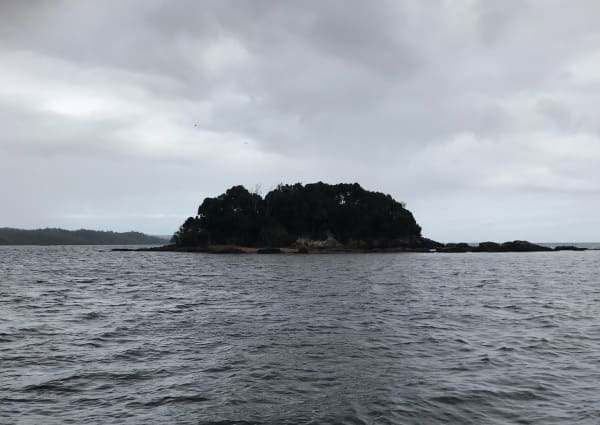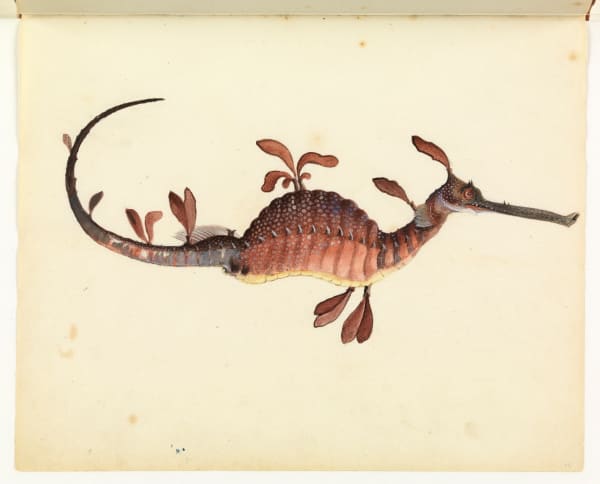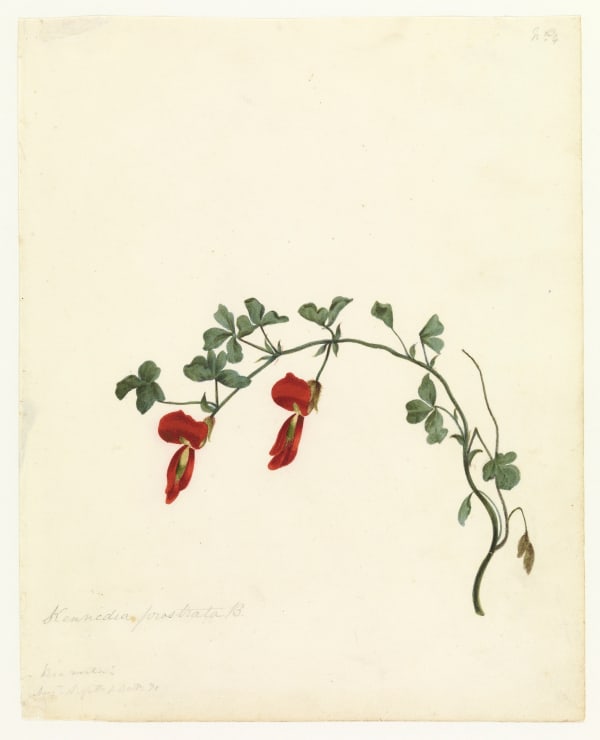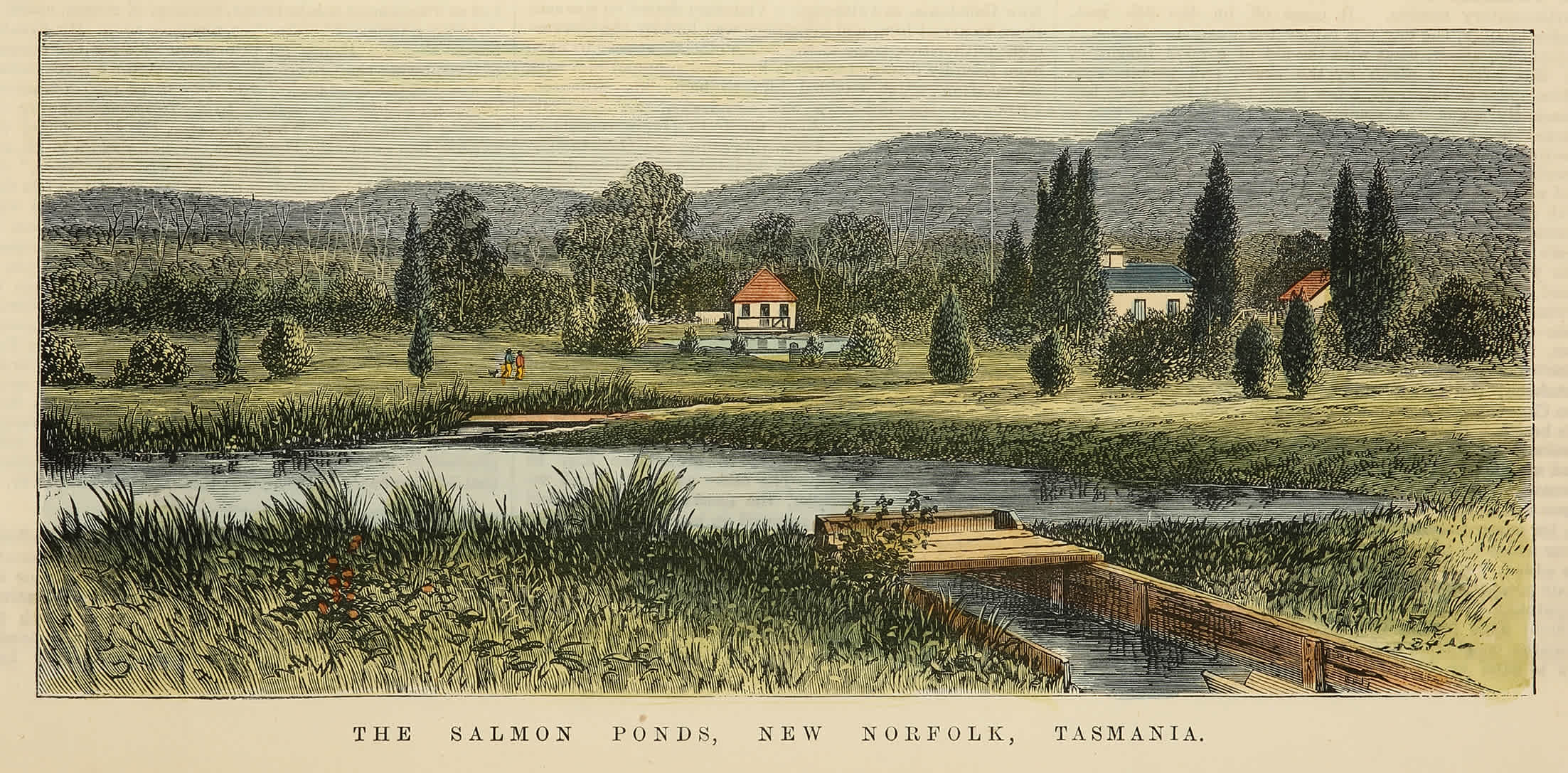When we arrive at Strahan’s Meredith Street boat ramp, our skipper Trevor Dennis already has the eight-metre charter boat on the water. We are up early to beat the big tourist boats down the Harbour. The low throb of the twin outboards echoes across the water as we leave the sleeping town behind us.
When we emerge from Long Bay into Macquarie Harbour proper, the wind picks up and showers come scudding in from the Southern Ocean. I comment on the contrast with yesterday’s lovely weather, and Trevor laughs. “This is the west coast.”
We thump our way through the choppy swell. An hour later, the wooded dome of a tiny island separates itself from the dark shoreline. It grows slowly, silhouetted against the leaden sky. Grummet Island was colloquially called the “small” island, and for good reason – it’s barely 60 metres long by 20 metres wide. In the days of the penal settlement, Grummet “Rock” was bare of vegetation and topped with a “wretched” timber barracks that housed up to 70 of the hardest convict cases.
We steer for the “big” island, half a mile away. Trevor cuts the motors and we gently nudge the jetty. “Welcome to Sarah Island,” he chirps, as he ties up.
From 1822 to 1833, just over 1,100 convicts served sentences on Sarah Island. I wonder how they were greeted.

The penal settlement at Sarah Island was established “as a place of confinement of the worst description of convicts”. Here prisoners should “severely feel their punishment” and its “lonely locality” would prevent their escape. While Hobart is only 150 kilometres away as the crow flies, that stretches to an infinity of tangled rainforest, steep mountains and deep rivers. There were escapees, but few ever made it anywhere other than back to Sarah Island. More often, they perished in the bush of starvation or were speared by Aborigines.
The Toogee people, who knew Sarah Island as langerrarereroune, proudly related that they had “killed plenty prisoner white men from Macquarie Harbour”. That’s probably a better fate than those who attempted to escape in the company of Alexander Pearce. He was recaptured twice alone — but remarkably well fed.
. . .
The sun breaks through as we climb the path up to the settlement. The first things we see are the markers showing where the commandant’s house once stood. Adjoining it was the surgeon’s quarters. This is where the convict artist William Buelow Gould lived and worked.
A week earlier, Caitlin Sutton had ushered me into a back room in the Allport Library and Museum of Fine Arts in Hobart. The Allport family has been a bastion of the Hobart establishment since 1831, a family of artists and lawyers, with an eye for beautiful things and the means to acquire them. In 1965, they bequeathed their extensive collection of art, furniture and books to the people of Tasmania.

Sutton is the Archivist and Curator of the Allport collection. She explains that what most visitors see is a facsimile of W.B. Gould’s “Sketchbook of Fishes” from Macquarie Harbour, but my research on Tasmanian freshwater crayfish (for the article, lutaralipina, Tasmania 40°South, Issue 91, p32) has privileged me to a special experience. Sutton slips on white gloves before opening the box that she has placed reverently on the table. She gently lifts out the original sketchbook and opens it. It is smaller than I expected, the size of a school exercise book, but I am immediately struck by the vividness of the 36 delicate watercolours of aquatic life from around the Harbour.
William Buelow Gould was just 24 when he arrived in Van Diemen’s Land in 1827, transported for the theft of a coat, a silk handkerchief and a pair of gloves. But Gould was no hard luck story of seven years exile for an isolated petty crime. Although young, he already had an extensive criminal record. Gould had received three months in the Northampton gaol and a public whipping for stealing paints and brushes.
His real surname wasn’t Gould — it was Holland. William Holland was born in Liverpool in 1803. As a youth, he headed to London and found work with Rudolph Ackerman, the father of English artistic lithography. Encouraged by his employer, young William trained in painting and drawing under the Irish-born artist William Mulready. Though naturally talented, the lack of technical proficiency in much of the young man’s work suggests that Holland didn’t remain a pupil of Mulready for long.

Holland fell in with a “bad crowd” and he fled London when two associates were arrested for murder over a gambling debt. The 21-year-old William Holland, now married, returned north and worked at the Spode factory in Staffordshire, decorating ceramics. Two years later, Holland deserted his wife and child and reappeared in Northampton grandiosely calling himself “William Buelow Gould, Portrait Painter and Drawing Master”. Business couldn’t have been good because within three months he was convicted for the paint theft.
Six months after that, William Buelow Gould was before the courts again, and sentenced to seven years transportation.
. . .
Gould’s artistic talent was recognised and valued in Van Diemen’s Land, but his drinking, gambling and propensity to be “light-fingered” meant he was often in trouble with the law. Gould was never violent, but his long list of misdemeanours included numerous thefts, passing a forged bank note, drunkenness, absconding and being on “the River Derwent without proper Authority”. For his sins, Gould felt the lash, worked the treadmill and served time at both Macquarie Harbour and Port Arthur. His recidivism achieved official notoriety, with Lieutenant-Governor George Arthur himself noting that “Gould is a very drunken and dangerous person to be in town”.
Gould’s paintings show a remarkable range. His greatest talent is shown in his watercolours of plants and animals. Some of his still life works are elegant, while others are strangely distorted. His portraiture is, at best, caricature-like, but I do love the irreverence of much of his work.

His paintings of flora and fauna led Gould to be assigned to serve men of science —typically in those days medical officers with side interests in botany and zoology. He painted specimens for Dr James Scott in Hobart and Dr William De Little on Sarah Island. At Port Arthur, Gould was assigned to Dr Thomas Coke Brownwell and then Dr John McBraine. Some of Gould’s paintings of fish from Port Arthur were collected by the visiting Austrian naturalist, Dr John Llotsky, who reportedly presented one to the vice-regal couple, Sir John and Lady Jane Franklin.
When Gould was on Sarah Island in 1833, he chronicled a significant moment in Tasmanian history, the barbaric capture and deportation of the west coast Aboriginal clans by George Augustus Robinson. Within a week of Robinson arriving at Sarah Island, Gould had sold him “a pair of pictures of fruit and flowers” and “a view of the Settlement”. Being the servant of Dr De Little, Gould had plenty of opportunity to observe Robinson’s pomposity and vanity as he dined with the commandant and surgeon.
When Robinson “brought in” the captive Aborigines, the settlement’s officers offered their astonished congratulations, Robinson’s egotism led him to utter “Veni, vedi, vici” — I came, I saw, I conquered. Gould painted Robinson’s “triumphant” Caesar-like return to Sarah Island with his captives. Robinson described it as being “well done” — he purchased it, along with a picture of a group of Aborigines and a portrait of the Ninene chief, Towterer. Towterer and his clan were “lucky”. They were quickly dispatched to Flinders Island. Others were not so fortunate. Of the 55 Aborigines Robinson imprisoned on Sarah Island, 16 succumbed to pneumonia, contracted in the cramped and unsanitary conditions of the convict penitentiary, while they waited for a ship to take them into exile. They are buried behind the hospital. Gould’s painting of Robinson’s return has vanished, but the pictures of the Aborigines and Towterer are in the Mitchell Library in Sydney.

. . .
After viewing the “Sketchbook of Fishes”, I asked Caitlin Sutton if the Allport collection contains any other works by Gould. She led me out into the gallery and showed me an oil painting “Still Life, Flowers in a Blue Jug”. I found it somewhat kitsch — Robinson and I clearly have different tastes. She then unlocks a cabinet and pulls out a draw holding a set of Gould’s botanical watercolours. I’m mesmerized. No wonder Dr Scott tried to claim personal credit for these. If only Gould could have made a living from this kind of work, rather than the numerous fruit, flowers and country kitchen scenes of he knocked out later in life. While some of his later works are well executed, others have jarring distortions of perspective, perhaps indicative of the varying degrees of sobriety under which Gould painted.
William Buelow Gould died a free, but broken man on December 11, 1853. He never recovered from his last sentence, two years hard labour for larceny, completed five years before his death. The slightly built artist had neither the physique nor constitution for the backbreaking work on the road gangs around Bridgewater and Jericho.
Dr Terry Mulhern is a biochemist, university educator and researcher. If he isn’t in his office or somewhere taking a class, look for him in the basement of the University of Melbourne’s Baillieu Library under 994.6 History, Tasmania. He was the 2018 winner of the David White Award for Teaching Excellence, the University of Melbourne’s highest honour for teaching in Health, Science, Agriculture and Veterinary Science. Terry Mulhern was born in north Queensland and has worked at universities in the UK and around Australia, but his heart is in north-west Tasmania.








